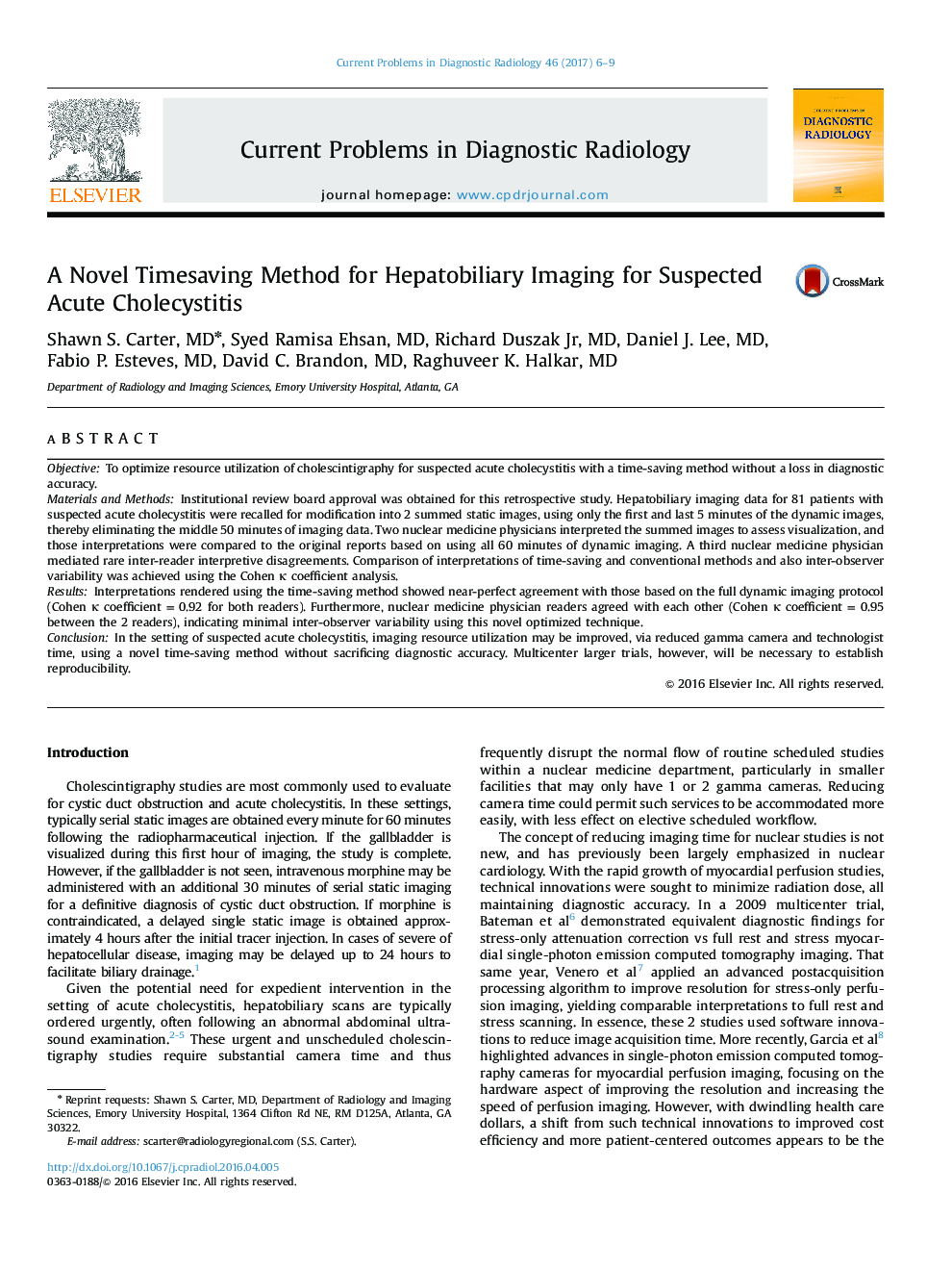| Article ID | Journal | Published Year | Pages | File Type |
|---|---|---|---|---|
| 5725958 | Current Problems in Diagnostic Radiology | 2017 | 4 Pages |
ABSTRACTObjectiveTo optimize resource utilization of cholescintigraphy for suspected acute cholecystitis with a time-saving method without a loss in diagnostic accuracy.Materials and MethodsInstitutional review board approval was obtained for this retrospective study. Hepatobiliary imaging data for 81 patients with suspected acute cholecystitis were recalled for modification into 2 summed static images, using only the first and last 5 minutes of the dynamic images, thereby eliminating the middle 50 minutes of imaging data. Two nuclear medicine physicians interpreted the summed images to assess visualization, and those interpretations were compared to the original reports based on using all 60 minutes of dynamic imaging. A third nuclear medicine physician mediated rare inter-reader interpretive disagreements. Comparison of interpretations of time-saving and conventional methods and also inter-observer variability was achieved using the Cohen κ coefficient analysis.ResultsInterpretations rendered using the time-saving method showed near-perfect agreement with those based on the full dynamic imaging protocol (Cohen κ coefficient = 0.92 for both readers). Furthermore, nuclear medicine physician readers agreed with each other (Cohen κ coefficient = 0.95 between the 2 readers), indicating minimal inter-observer variability using this novel optimized technique.ConclusionIn the setting of suspected acute cholecystitis, imaging resource utilization may be improved, via reduced gamma camera and technologist time, using a novel time-saving method without sacrificing diagnostic accuracy. Multicenter larger trials, however, will be necessary to establish reproducibility.
